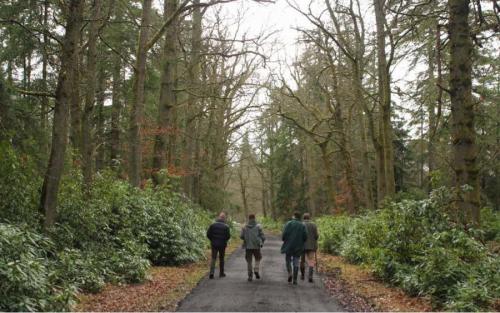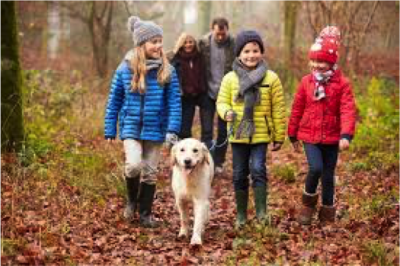
The images you use in your materials are more than just decoration. The right image can enhance your message in so many ways. It can attract attention to your materials; it can elicit powerful emotions that urge action; it can establish a relationship with the landowner, signaling that you really understand them; and it can also convey part of your message content so you don’t have to use as many words.
But what is the right image?
We get asked this question a lot at our workshops. In part, the answer to this question lies in best practices. As a general rule, close-ups work better than landscape level shots; faces (human or animal) tend to draw attention; and people are more likely to attend to images of people who are like them or show landscapes that are familiar.
But there are exceptions to all these rules, causing me to think long and hard about how to offer good guidance on this topic. The key is that the image must speak to the audience. Oftentimes, this means that the image communicates a story. When a member of your audience sees this image, they should immediately know what is going on, who the characters are, what they’re saying, and what they’re feeling.
Consider the two pictures below.

This is a picture of a bunch of people walking through the woods. Can you tell who they are and what they’re feeling? I could not.

Now consider this picture. It’s clearly a picture of parents with their kids (and perhaps a friend) and dog walking their woods. It also tells you how the people involved are feeling. The kids are clearly having fun, but it’s also clear that the walk is relaxing for the parents. This picture makes me want to go for a walk in the woods with my dog and my family. I think it would remind woodland retreat owners of why they own their woods and the kind of lifestyle they want.
Pictures that mean something to your audience and evoke emotions are better choices than those that don’t. But this can be a subjective thing—what speaks to you may not speak to your landowners. The best tack may be to choose pictures that seem to carry a story and an emotion, and then do some quick tests to see whether they also speak to your landowners.
By the way, this doesn’t mean that you shouldn’t use images without people or animals. Those images speak to your audience differently—by evoking powerful emotions like pride, awe, fear or terror. But that’s a topic for a different post.
We know from talking with many of you that it’s hard for you to find good pictures for your outreach materials. One of the things that SFFI is planning to do is to identify good sources of free photographs that we can all use. If you know of any good sources (online or other) please share them in the space below or drop us an email. We’d really appreciate it.
Comments
Great food for thought. Pic one, all too often we see pictures taken at field days or other activities for groups taken from behind featuring the presenter, we should be using taken from the front showing audience reaction.
I would kick the second picture up a notch by having someone point at something... just a hand/finger pointing to something out there to show interaction in the woods. In this pic the children could be talking about anything rather than the experience they are having...
Keep up the great work Purnima, let's see this MONTHLY as suggested at the Midwest Advisory Meeting at Leopold!
Great tip, Purnima. Forestryimages.org and the bugwood network come to mind for sources of images. Also the forest history society has a good library. I’m sure you’re aware of the commercial vendors. Aside from those I’ve also used social media like Flickr, searches for my landscape like Cumberland plateau and identified good photos and photographers.
I assume you know about Bugwood.org? If not, they have images of invasive species (for those times you want to evoke awe, fear, or terror). They also have Silvicultural images. All are free to use for educational purposes.
Hi everyone,
Thanks to those who've responded to this tip. It's great to have your feedback and to hear your ideas for image sources. We hope to pool your brains and ours to build a nice resource for everyone to you.